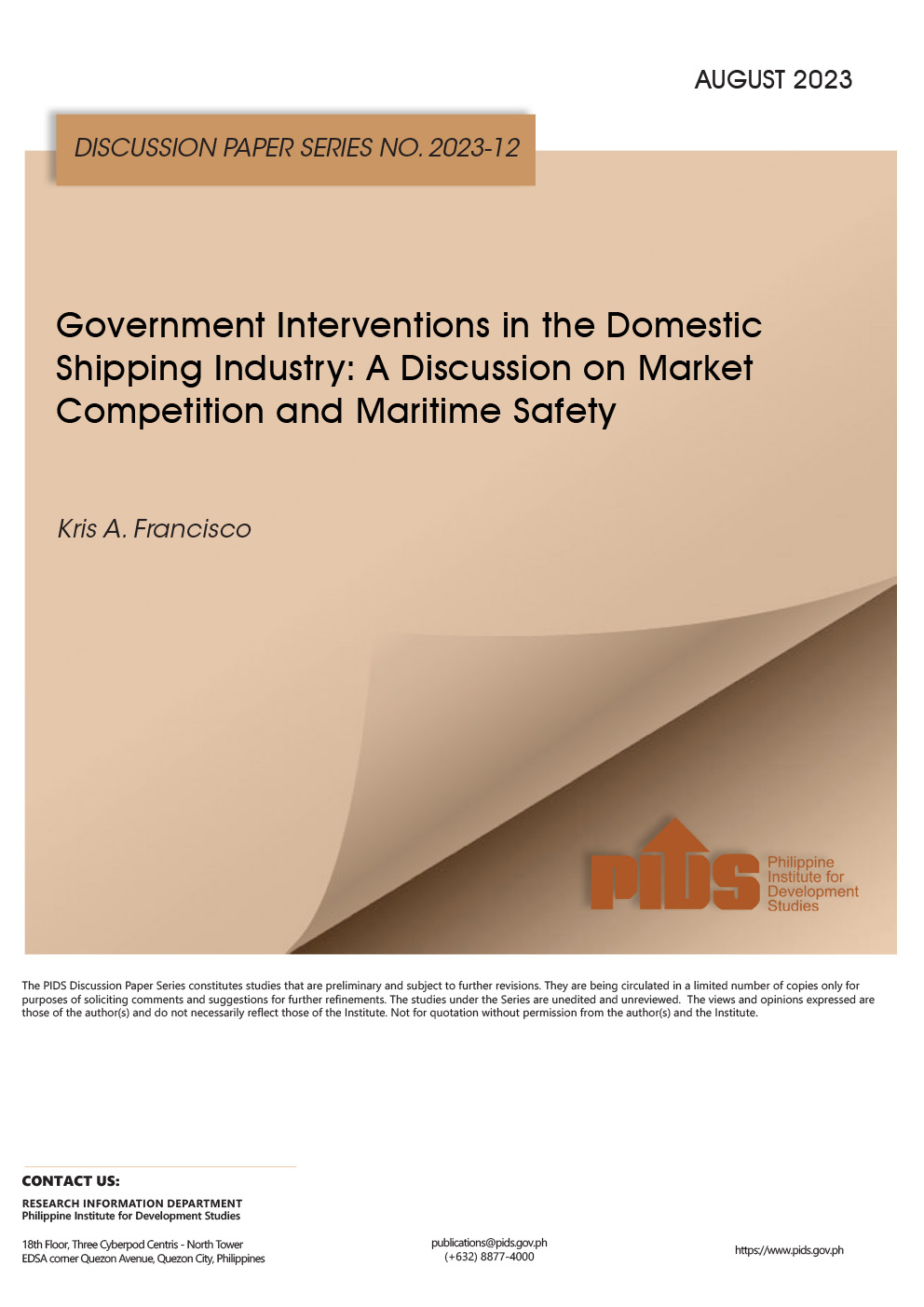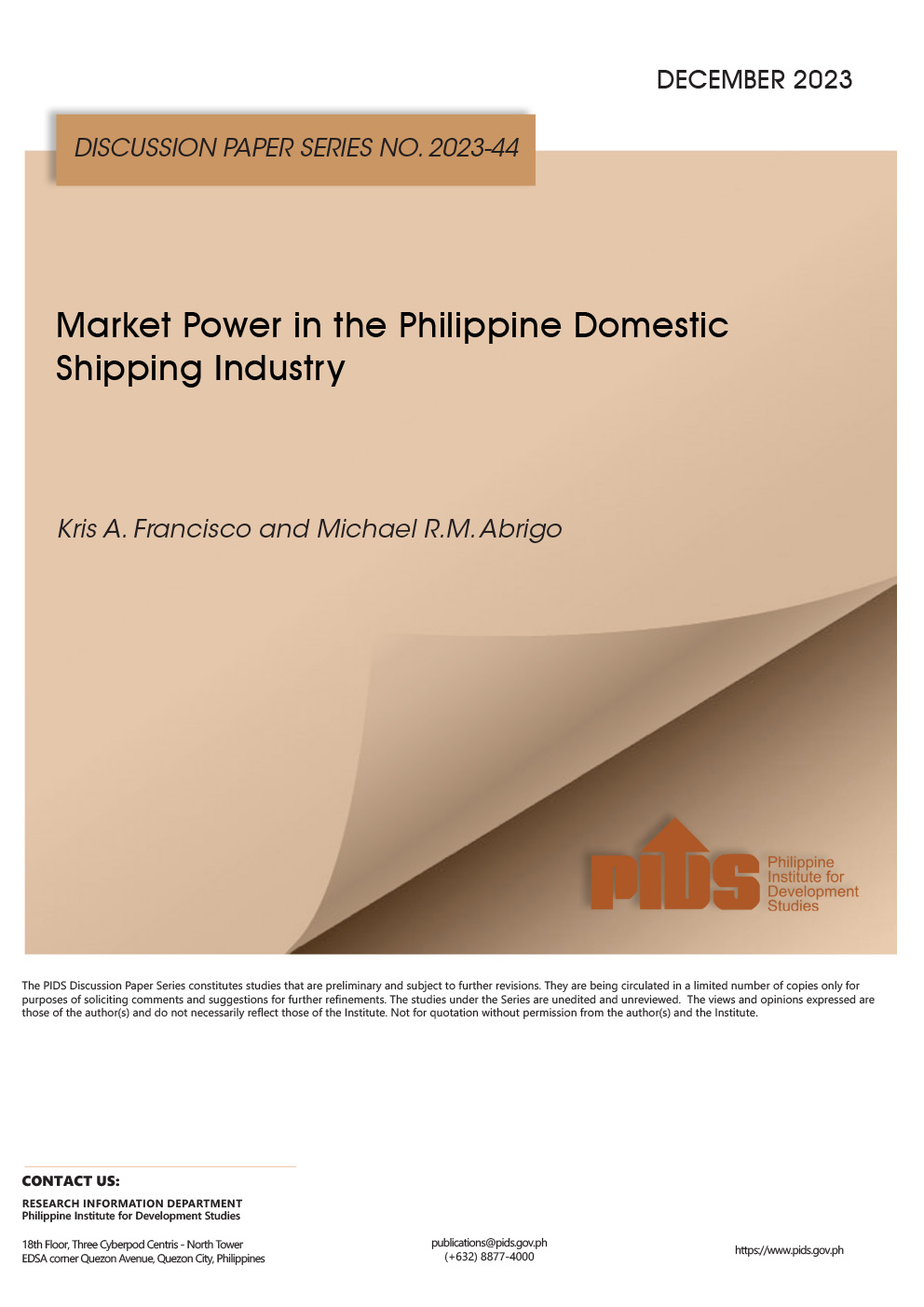
Market control varies across freight and passenger services, leading shipping companies to adjust their pricing strategies accordingly. Robust regulatory frameworks are needed to monitor market concentration levels, evaluate competition dynamics, and prevent anti-competitive behaviors. Such will contribute to a healthier and more competitive industry.
This was emphasized in a study authored by Philippine Institute for Development Studies Research Fellows Kris Francisco and Michael Ralph Abrigo, titled “Market Power in the Philippine Domestic Shipping Industry”. It reveals the challenges posed by the dominance of large companies in the local shipping sector.
“It is important to maintain competition at the route-level to prevent excessive market power that could harm consumer welfare and industry dynamics. Studies are crucial to inform policy decisions and craft better regulations,” the authors said. They emphasized that the concentration of market power among major players raises concerns about anti-competitive practices, including price manipulation, reduced incentives for innovation, and limited consumer choices.
Despite policy reforms dating back to the 1990s aimed at fostering competition, the domestic shipping industry in the Philippines continues to be dominated by a small number of key players. Data from a study in 2000 highlights this issue, revealing that the top 10 shipping companies controlled 74 percent of the domestic cargo market. Furthermore, the top five container shipping lines held an even tighter grip, accounting for 82 percent of the total container throughput.
Meanwhile, a 2014 World Bank report revealed that more than 40 percent of 54 shipping routes were served by a lone operator, and almost a quarter were served by three or more operators. This oligopolistic tendency of the industry was attributed to two key factors: economies of scale and service frequency. High maintenance and operating costs for vessels incentivize companies to expand their operations, spreading these fixed costs over a larger fleet. However, customer demand prioritizes frequent service over larger vessels with infrequent schedules. This dynamic can lead to one or two companies strategically focusing on high-volume routes, ultimately dominating those specific markets.
“The government desires some form of competition at the route level to deter companies from gaining too much market power, which could have welfare implications to consumers and the whole industry,” the authors explained. A more competitive environment where multiple operators can serve various routes could mitigate the negative effects of market concentration and excessive market power.
The study further reveals a correlation between a firm’s profile and its pricing strategy. Firms with a high market share, substantial fixed assets, larger workforces, and longer track records tend to impose higher markups. This aligns with expectations, as dominant players often leverage market power to raise prices. Firms operating outside the National Capital Region (NCR) also exhibit higher markups.
Markup strategies between passenger and freight services show a noteworthy difference. Firms consistently charged higher markups on freight across all examined firm characteristics. Building on this observation, the authors mentioned another study’s findings that the presence of budget airlines in the passenger market creates a competitive landscape that is absent in the freight market. This suggests that competition from the air transport industry acts as a disciplining force, keeping markups for passenger shipping services in check.
The authors acknowledged that while the study sheds light on the connection between firm characteristics and pricing strategies, the complexities of market power in the shipping industry deserve further exploration. Continued research is crucial to fully understand the underlying factors influencing firm behavior, ultimately paving the way for well-informed policy responses that benefit both businesses and consumers.
Read the full study here: https://www.pids.gov.ph/publication/discussion-papers/market-power-in-the-philippine-domestic-shipping-industry. ###












